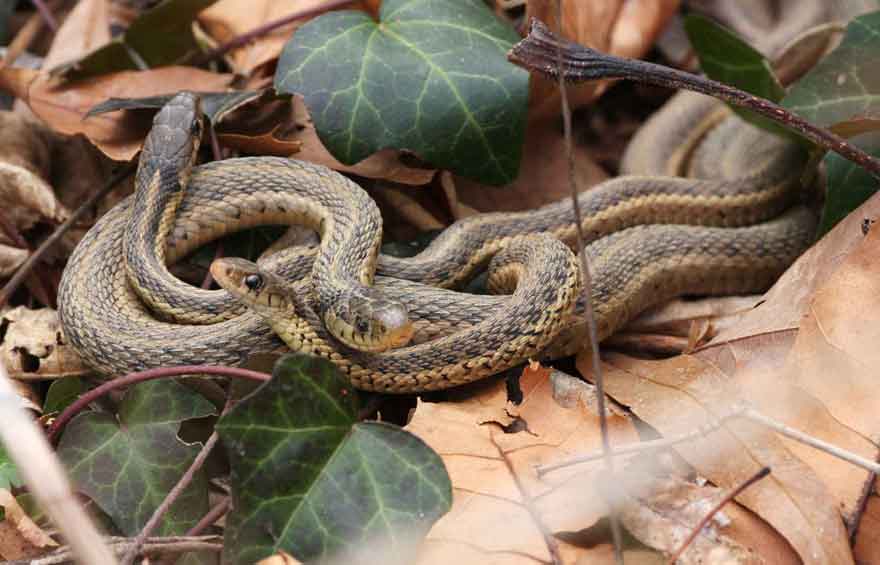If you have chickens, you need to know how to keep snakes out of chicken coops. Snakes are a frequent side effect of keeping chickens. And, while it may not seem like it at first, snakes aren’t always an unwelcome guest. The presence of snakes often means that mice and rats are visiting your chicken coop as well, and the snake has followed them, looking for an easy meal. If the snakes would only stick to eating your unwanted pests, they might be a welcome sight near your chicken coop.
Unfortunately, snakes often pose a risk not just to mice and rats, but to eggs, chicks, and even chickens. And venomous snakes may be a health risk for human family members and pets. For the health and safety of everyone, it’s best to prevent snakes from coming around the chicken coop at all.
How to tell if you have snakes around your chicken coop
Obviously, if you see a snake, you know you have a problem. But even if you don’t see a snake, there are some tell-tale signs:
Reduced egg harvest
While chickens tend to slow down egg production in fall and winter, or when stressed, overheated, or molting, it is also possible that a snake is getting to some eggs before you are.
Regurgitated eggshells
Snakes will digest everything but the shells, and then regurgitate empty shells compressed into a cigar-like shape. Seeing these shells is a good sign that you have a snake.
A wet chick or chicken with a wet head
Believe it or not, this can be a sign that a snake tried to make a meal of your chick or chicken but gave up before finishing.
Snakeskin
Snakeskins are not only a sure-fire sign of snakes, but snakes generally only molt where they feel safe and comfortable. Seeing a snakeskin means your snake is quite at home in your coop.
What kinds of snakes should cause concern?
All snakes that threaten your chickens, chicks, or eggs should cause some concern. In the US, they are generally king snakes, milk snakes, rat snakes, black snakes, and (naturally) chicken snakes. These are all North American constrictors, and none of these snakes are venomous, but some species of rat snake are known to be aggressive.
It’s never good to be bitten by a snake, because even non-venomous snake bites can be painful and potentially cause infection. It may be reassuring to know that human family members are probably at low risk of being harmed by the snakes in your chicken coop.
What to do if you have snakes in your chicken coop?
If you have snakes, or think you have snakes, in your chicken coop, remain calm. Remember that they are usually not drawn directly to your chickens or eggs but were probably attracted to the coop by the presence of rodents. In fact, if you can protect your chickens, snakes can be a welcome form of pest control.
Research snake species in your area to determine whether there is any risk to humans. It may be helpful to call your local animal control agency and ask for their advice. Remember that many American snake species are protected, so don’t run out and buy repellents or poisons. Instead, work on keeping snakes out of your chicken coop.
How to keep snakes out of chicken coops
Firstly, secure your coop. If you have been enclosing your chickens with chicken wire, upgrade to hardware cloth with 1/4” or 1/2” openings. Find any gap or breaches where snakes may be entering the coop and close them. Weather strip gaps around doors and hatches. Snakes can get into openings larger than just ½ inch, so examine your coop closely.
Secondly, pay attention to where mice and rats may be attracted, and take steps to reduce their presence. That can mean cleaning your coop more often. Secure food bins and food containers overnight in rodent-proof containers stored away from the coop. Consider slightly reducing the amount of food you give your chickens. This helps to reduce spills and prevent excess food being scattered where it may attract rodents.
Thirdly, clear the area to give less cover to both snakes and rodents. Removing dried leaves, old hay, brush, and debris from around the coop area reduces hiding places, and also reduces places where spilled feed might accumulate. Trim shrubs and hedges.
Finally, consider other steps to make your coop less attractive to snakes. Adopting a cat can help reduce rodents that attract snakes. Many chicken owners also find it helpful to adopt a couple of guinea fowl and add them to their flock. These fascinating birds can get along well with chickens and will emit an unusual call when they encounter rats or snakes. Guinea fowl are territorial and have even been known to attack and kill small pests and predators.
What to do if you see a snake in your chicken coop
If you see a snake in your chicken coop, remain calm and call your local animal control or wildlife office. It is never a good idea to try to trap or handle a snake without training. If possible, move your chickens away from the snake and wait until help arrives.
Your local animal control can also advise you on the use of humane traps for snakes. It is a challenge to find snake traps, poisons, or repellents that are not also potentially threatening to chickens, and, again, many species of snake are protected. Many folkloric remedies, like golf balls, mothballs, or snake repellent sprays, either don’t work, are harmful to chickens and friendly species. If you have a severe problem and haven’t been able to address it by reducing the rodent population, trapping is the next-best solution.
When it comes to snakes in the chicken coop, remember that snakes don’t always have to be unwelcome, and that they have an important role in the natural ecosystem. Take steps to secure your coop and protect your chickens, and make the coop area less attractive to rodents, and your snake problem may soon be no problem at all.

